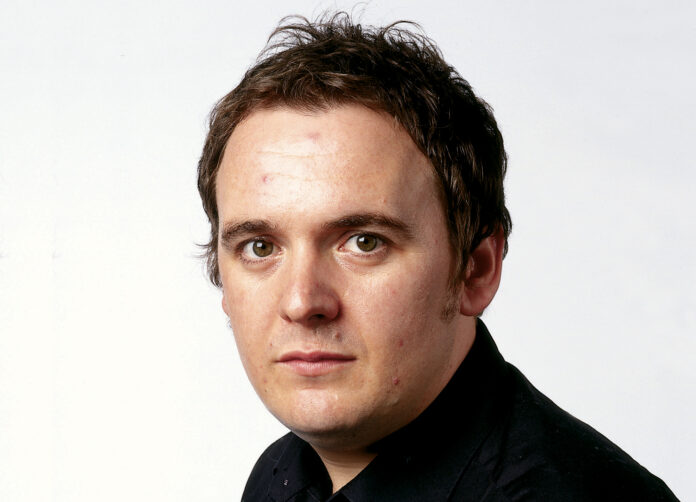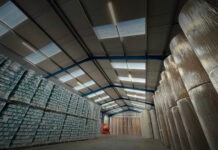As pricing shows signs of normalising in the coming months, Consumer Markets Analyst Simon Creasey looks at how manufacturers handled the dilemma of absorbing cost increases or increasing prices.
Last year was a rollercoaster ride for tissue manufacturers. Rampant inflation globally and a resulting consumer cost of living crisis impacted operations and margins. However, in many countries in recent months inflation has fallen from double digit highs to low single figures, and it is anticipated this trend will continue through 2024.
So how badly affected have tissue manufacturers been, and what impact did it have on consumer purchasing habits? A distinctive difference during this inflationary period was the many different factors at play. From sky high energy prices for European manufacturers, caused in large part by the war in Ukraine, through to major price hikes for raw materials and the escalating cost of labour – it was a perfect storm that wreaked havoc with the margins of many manufacturers.
As Laure Miribel, Deputy Chief Executive of France’s MP hygiene, explains: “The strong price increase of raw materials (pulp) and energy has impacted us (paper manufacturers) a lot. We have had to redesign some products and dispensing systems in order to reduce as much as we could the consumption and find solutions to help our clients during this period.”
It was a similar situation at UK-based Poppies Europe, according to Sales Director John Fearns: “Inflation has been a factor in record high tissue pricing, as a business this has had a significant impact in how we have had to manage our customer base. With tissues price increases becoming a regular concern and due to being an independent convertor we had to revisit our cost base regularly.”
Manufacturers were able to absorb some of these costs, but given how high and how rapidly the cost of some goods and services rose, many companies have had to closely scrutinise their operations.
“It would have been impossible to fully absorb such cost increases without increasing the prices of our finished goods,” explains Miribel. “We have therefore decided to both absorb part of the increase and therefore lose some profitability and review our pricing strategy.”
For some manufacturers the decision as to whether or not to absorb soaring costs or pass them on in the form of price rises was a more straight forward equation. As Pau Vila, General Manager of Spain’s L.C. Paper, says: “In terms of the parent reels business, most of the pulp cost increases and energy cost increases are immediately passed to the customers since the selling unit is tons of tissue, so there is no room for changes in the selling unit to compensate for those cost increases – that would go directly against the margin of the producers, which is already very low due to the past challenges in terms of costs.
“However, in the area of finished products (converted), things are different: the selling unit is not a ton or a kg of tissue but rather a roll of tissue – either a toilet roll, a hand towel roll, etc. – which means that there are multiple vectors to adjust and compensate the cost fluctuations including a change in the roll length, a change in the sheet size, a change in thickness (gsm), a change in composition (switch from pure pulp to recycled) or even modifications of the roll count in each package.
“All of those elements which could fall into the definition of ‘shrinkflation’ have been consistently adopted by most converters, usually in the scope of an open discussion with each customer to find the balance between cost increases and product modifications to mitigate those cost increases.”
At Poppies Europe, the company’s main area of focus when it comes to keeping costs under control has been increasing its production efficiency by investing in systems and in its people.
“We have identified and addressed areas within our business that can be improved and within the last year we have implemented a plan which has already worked in improving our overall production efficiency,” says Fearns. “The efficiency measures are part of our long-term goal to help future proof the business and we are always looking at possible investments in tissue machines to have total control over our supply chain.”
While keeping control of supply chains and costs remains within the purview of tissue manufacturers, what is outside of their control is how consumers respond to the rising cost of goods on retailers’ shelves. The impact of these price hikes has been pretty stark, according to Vila.
“We have seen a quicker degradation of sales in premium products in contrast of a steady rate of sales for budget products, or even a growth of the latter,” he explains. “Some non-essential product categories have suffered a certain degree of demand destruction, which is the case of hand towel rolls in AfH, which can be replaced by hot air blowers, or facial tissues, which can be replaced by toilet paper.”
In the UK market in particular, consumers searching for products that offer a better value for money proposition has boosted sales of private/own label products, which are typically cheaper than branded alternatives. According to The Grocer’s annual Top Products Survey 2023 which was published in December 2023, volume sales of branded kitchen roll in the UK fell by a whopping 12.5%, whereas own label sales edged up 0.2%. It was a similar story in facial tissues, with branded volumes down 2.4%, whilst own label volumes rose 7.2%.
Interestingly, when it comes to toilet paper The Grocer’s data shows branded volumes increased 4% compared with an own label decline of 3%. The magazine attributed this to price cutting by some branded operators, who reduced prices to lower than that of own label equivalents, which resulted in significant growth for brands such as Nicky and Little Duck. What is also counter-intuitive to discover during the worst cost of living crisis in recent memory is some premium products also fared well over the last 12 months.
“[Due to] UK consumer spending habits in the tabletop sector we are seeing a shift to our more premium offering such as the Tablin/Airlaid napkins we produce which is a disposable alternative to linen,” says Fearns. “This was quite surprising as the feeling was due to the inflation pressures business would look to trade down to a lower value product. Although the thought is that when the consumer is going out to eat, they are looking for quality when spending money and something that they feel they are getting value from. Trend data shows UK consumers are going out less frequently but spending more when they do.”
While the economic picture may look mixed for 2024, with economies such as Germany and the UK teetering on the brink of recession, the good news is that inflation appears to be under control and pricing should show some signs of normalising in the coming months. The price of some items has already corrected. For instance, last year manufacturers saw a dramatic decline in input costs for some raw materials, which had skyrocketed during 2022.
“The wood pulp cost suffered a huge increase during the year 2022 which led to record high prices of up to 1.900 €/t for tissue parent reels in Europe, which was followed by a sharp decrease in wood pulp costs from January 2023 to June 2023 of up to – 50%,” says Vila. “That is due to supply and demand mis-adjustments and does not follow the general inflation evolution of the European economies. As a result, tissue paper – and paper in general – has seen a decrease in prices in 2023 while other categories were suffering price increases due to the inflation.”
It’s anticipated the downward trend in pricing for many materials and other input costs, such as energy, will continue over the coming months. There is also a growing opportunity for manufacturers to capitalise on increased consumer demand for eco-friendly/sustainable products as many shoppers who purchase these types of products are not so price sensitive, mainly because the driving factor behind their purchasing decision is not price, but the environment.
At the moment, it is far too early to say with any certainty how 2024 will pan out – especially if there is another black swan event such as a war. The only thing that looks certain at this point is inflation appears to be reducing in most developed nations, which suggests we could be on the cusp of a brighter economic period following a lengthy period of stagflation.

































